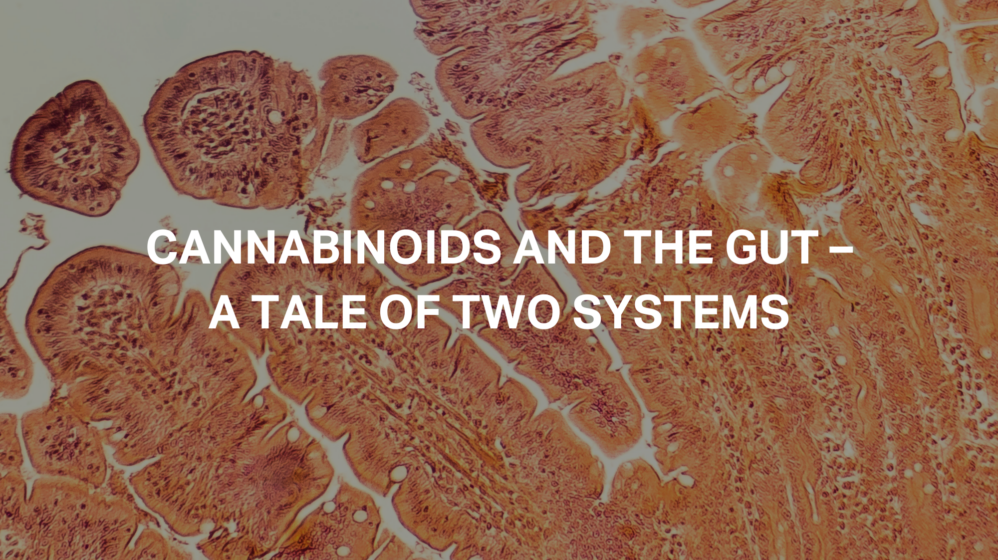In recent years, our understanding of how cannabinoids can help the human body has skyrocketed. It seems with every new study published, we learn a little bit more about how CBD, CBG, and dozens of similar compounds can improve our lives. To take just one example, recent advances in our understanding of gut health show that cannabinoids can be a powerful tool in mending broken systems within the body and managing chronic disease, far outside the parameters of simply managing pain.
But the science surrounding these breakthroughs can be confusing and complex, especially when it comes to the language used. Terms like endocannaboidome, polymorphisms, and arachidonoylglycerol are hardly welcoming to those without medical-academic backgrounds, and it can be hard to understand what’s really being said. But never fear, dear reader – PĒLL is here to cut through the jargon, explain what’s going on, and help you make better choices for you and your body!
The Endocannabinoidome (eCBome) – Cannabinoids’ Gateway to the Body
To understand how cannabinoids can have a positive impact on gut health (and through it, the whole body), we must look at two important bodily systems – the endocannabinoidome (eCBome) and the gut microbiome. Before we delve into those, however, let’s remove the mystery of cannabinoids – a word often used but rarely properly explained.
A cannabinoid is a chemical compound that can interact with special receptors within the human body, producing effects that alter how the mind or body function. These compounds were first discovered in cannabis plants, which is reflected in their name. Cannabinoids created by the body are called endocannabinoids; those found in plants such as cannabis are called phytocannabinoids.
The endocannabinoid system consists of the network of cannabinoid receptors in our body and all the chemicals that supply them. Recent research has suggested that that is useful to expand this definition to include similar receptors – this slightly larger system is called the endocannabinoidome (eCBome). Our bodies use the eCBome to maintain homeostasis – a consistent internal balance despite shifting external conditions. If our body senses a change in factors such as climate, mood, sleep, or hunger, cannabinoids are produced and sent to interact with receptors, which alert the body and initiate self-correction.
But if the body produces its own cannabinoids, why would we need to introduce phytocannabinoids into the system as well? The simple answer is that the eCBome is not a perfect system, and is certainly not identical in everyone. It is common for people to not produce enough endocannabinoids, or to possess less receptors than they should. But the human body is a brilliantly adaptive organism, and by supplementing the eCBome with extra cannabinoids, it is possible to stimulate the system into producing more compounds and more receptors of its own.
The Gut Microbiome – A Community of Trillions
Within a human gut, you will find a wealth of different microorganisms (including bacteria, viruses, fungi, and other microbes) that play important roles in bodily functions such as immune function, digestion and nutrient absorption. This cooperative microscopic community is called the gut microbiome, and its health is a vital factor in maintaining the larger health of the human body. Dysbiosis occurs when the gut microbiome is disrupted and becomes imbalanced, which can lead to wide-ranging and serious repercussions for both the gut and human body as a whole.
Through the nervous system, the gut impacts and is impacted by the rest of the body. The longest cranial nerve found in mammals – the vagus nerve – runs from the brain down to the colon, connecting our most essential internal organs to the brain and one another. The gut-brain axis, sometimes known as the microbiome-gut-brain axis, refers to the two-directional communication pathways that link the gut microbiome with the emotional and cognitive centres of the brain (and the intermediaries in between). The gut microbiome and eCBome are also connected via these pathways, with both systems able to signal with and affect change with the other.
Cannabinoids in Action – Helping You and Your Gut
Okay, so now we understand how cannabinoids interact with our eCBome, what constitutes our gut microbiome, and how the two systems are deeply connected to one another and the rest of our bodies, including our brains. A positive change in one system can bring benefits that affect the other and vice versa (as well as the rest of us). It can be hard, however, to understand what is actually being achieved. What kind of changes are we talking about, and how noticeable can the effects really be?
Research in this area is promising, and new studies are published frequently that show cannabinoids have the potential to greatly aid in the management of chronic disease. A 2013 study found that cannabigerol (CBG) reduced inflammatory bowel disease (IBD) symptoms and attenuated the disease by inhibiting the production of nitric oxide (a signalling module that induces inflammation in the body).
Like CBG, cannabidiol (CBD) has also been shown by several studies to have a positive effect on the management of gut-related disorders such as IBD and irritable bowel syndrome (IBS). One such study in 2010 found that CBD lowered levels of inflammation, minimised intestinal damage, and lowered the occurrence of functional disturbances.
A 2020 review of the use of CBD in the treatment of alcohol use disorders showed there is some evidence that part of CBD’s capabilities in such situations comes from its beneficial effects on the microbiome-gut-brain axis. The research suggests that whilst alcohol use was associated with immune system dysfunction, cannabinoids were shown to help reduce intestinal permeability, regulate the gut microbiome, and reduce inflammation. This, coupled with a wealth of literature demonstrating cannabinoids’ positive effects on the symptoms of mood and anxiety-related disorders, shows just how impactful cannabinoids can be for the whole body.
A Solid Foundation
So, we’ve demystified different cannabinoid terms, learnt about the eCBome and the gut microbiome, and explored just some of the ways cannabinoids can have a positive impact on the health of our gut and our whole body. Hopefully you’re now better equipped to delve into the exciting and ever-expanding world of cannabinoid research!
Always remember that whilst the language used in scientific research may be confusing and opaque at first, the underlying principles of human health can be remarkably simple. Our bodies are an interconnected web of organs, neurons, microorganisms, and hundreds of other elements that are all constantly communicating and impacting one another. Because of these connections, when one element fails, it can impact the whole body, in ways we may find surprising. That connection, however, is also a great strength – enabling us to combat problems from a variety of angles, and allowing us to find brilliant, lasting solutions in even the most unlikely of places!
If you would like to learn more about how phytocannabinoids can help you achieve better health, or need advice on which PĒLL product best suits your needs, we are always happy to help. You can contact our PĒLL experts here!
References
- Borrelli, F., Fasolino, I., Romano, B., Capasso, R., Maiello, F., Coppola, D., Orlando, P., Battista, G., Pagano, E., Di Marzo, V., & Izzo, A. A. (2013). Beneficial effect of the non-psychotropic plant cannabinoid cannabigerol on experimental inflammatory bowel disease. Biochemical pharmacology, 85(9), 1306–1316. https://doi.org/10.1016/j.bcp.2013.01.017
- Carabotti, M., Scirocco, A., Maselli, M. A., & Severi, C. (2015). The gut-brain axis: interactions between enteric microbiota, central and enteric nervous systems. Annals of gastroenterology, 28(2), 203–209.
- Carding, S., Verbeke, K., Vipond, D.T., Corfe, B.M, & Owen, L.J. (2015) Dysbiosis of the gut microbiota in disease, Microbial Ecology in Health and Disease, 26:1, DOI: 10.3402/mehd.v26.26191
- Di Marzo V. (2020). The endocannabinoidome as a substrate for noneuphoric phytocannabinoid action and gut microbiome dysfunction in neuropsychiatric disorders
. Dialogues in clinical neuroscience, 22(3), 259–269. https://doi.org/10.31887/DCNS.2020.22.3/vdimarzo
- Iannotti, F. A., & Di Marzo, V. (2021). The gut microbiome, endocannabinoids and metabolic disorders, Journal of Endocrinology, 248(2), R83-R97. https://joe.bioscientifica.com/view/journals/joe/248/2/JOE-20-0444.xml
- Jamontt, J. M., Molleman, A., Pertwee, R. G., & Parsons, M. E. (2010). The effects of Delta-tetrahydrocannabinol and cannabidiol alone and in combination on damage, inflammation and in vitro motility disturbances in rat colitis. British journal of pharmacology, 160(3), 712–723. https://doi.org/10.1111/j.1476-5381.2010.00791.x
- Karoly, H.C., Mueller, R.L., Bidwell, L.C. and Hutchison, K.E. (2020), Cannabinoids and the Microbiota–Gut–Brain Axis: Emerging Effects of Cannabidiol and Potential Applications to Alcohol Use Disorders. Alcohol Clin Exp Res, 44: 340-353. https://doi.org/10.1111/acer.14256
- Melas PA, Scherma M, Fratta W, Cifani C, Fadda P. Cannabidiol as a Potential Treatment for Anxiety and Mood Disorders: Molecular Targets and Epigenetic Insights from Preclinical Research. International Journal of Molecular Sciences. 2021; 22(4):1863. https://doi.org/10.3390/ijms22041863
- Schiano Moriello, A., Di Marzo, V., & Petrosino, S. (2022). Mutual Links between the Endocannabinoidome and the Gut Microbiome, with Special Reference to Companion Animals: A Nutritional Viewpoint. Animals: an open access journal from MDPI, 12(3), 348. https://doi.org/10.3390/ani12030348
- Sharma, J. N., Al-Omran, A., & Parvathy, S. S. (2007). Role of nitric oxide in inflammatory diseases. Inflammopharmacology, 15(6), 252–259. https://doi.org/10.1007/s10787-007-0013-x
- Srivastava, R. K., Lutz, B., & Ruiz de Azua, I. (2022). The Microbiome and Gut Endocannabinoid System in the Regulation of Stress Responses and Metabolism. Frontiers in cellular neuroscience, 16, 867267. https://doi.org/10.3389/fncel.2022.867267






